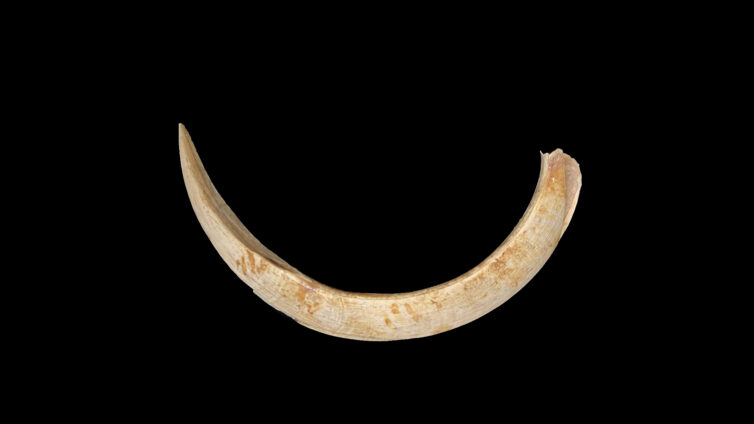
There are at least five, but up to seven subspecies of Eurasian Boars, and they belong to the most widespread species of wild boar. This tusk likely belongs to Sus scrofa moupinensis Milne Edwards, which reaches from Coastal China, south to Vietnam, and west to Szechuan (Eurasian Wild Boar [Detailed Profile), n.d.).
It is a comparatively small wild pig with a shorter face than other boars. However, the males still weigh up to 705 pounds! Their hair is yellow-gray in the winter and black in the summer. This subspecies lacks the mane of others.
They will eat anything they see—carrion, berries, roots, nuts, grasses, insects, birds, and smaller reptiles. They even eat deer and lambs. Damage to crops can be problematic.
These wild pigs love to wallow in the mud and mark their territory by rubbing their muddy hides on tree trunks. They rest together in groups of 20-100 females with their bodies touching, rotating these resting places frequently. Males are solitary.
“If surprised or cornered, a boar (and particularly a sow with her piglets) can and will defend itself and its young with intense vigor. The male lowers its head, charges, and then slashes upward with his tusks. The female, whose tusks are not visible, charges with her head up, mouth wide, and bites” (Eurasian Wild Boar [Detailed Profile], n.d.).
Reflection question:
Did you know that these boars have been known to intimidate jaguars in order to steal the jaguars’ kill? That’s one scary pig!
Reference:
Eurasian Wild Boar (Detailed Profile) | WPSG. (n.d.). WPSG. https://www.iucn-wpsg.org/eurasian-wild-boar-detailed
